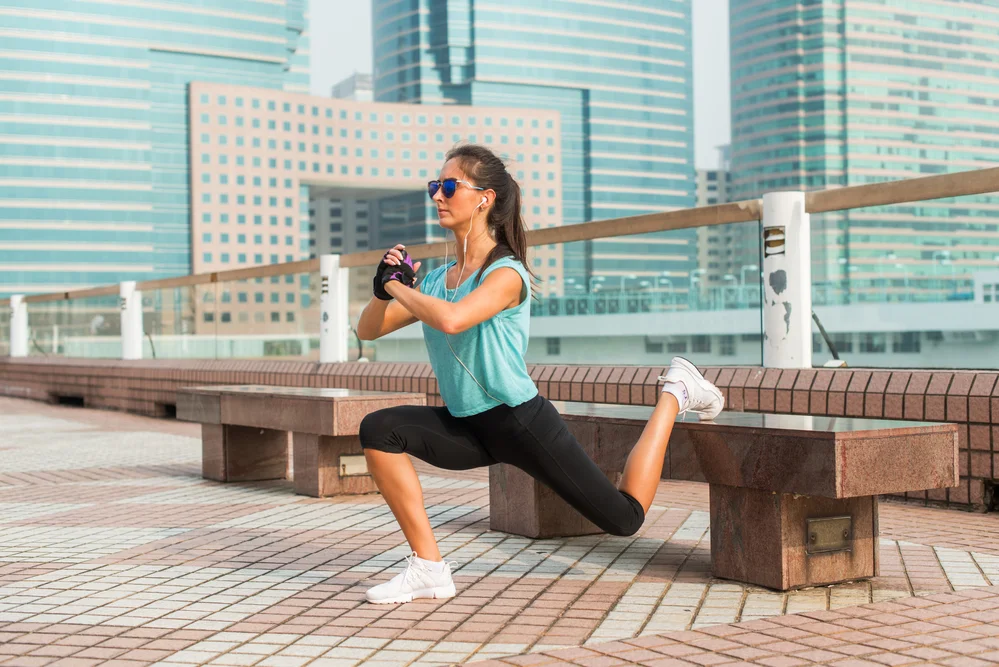Exercise

Pilates is a very popular form of exercise and you can find Pilates studios and classes in every city and town. It’s accessible for everyone, regardless of skill level, and can have a real impact on your life and health.
One area of your body that Pilates can really benefit is your knees. Knee injuries are one of the most common injuries that people can suffer because of the role our knees play in everything we do.
They’re a major weight-bearing joint and are constantly being put under stress whenever we walk, run, sit, or stand. Most exercises put even more strain on your knees due to their high-impact nature.
Pilates, on the other hand, is a low-impact exercise. It will allow you to exercise your knees and increase your mobility without running the risk of injury.
By increasing your knee mobility and strength, you will also prevent the chance of injuring your knees during other exercises.
In this article, we have listed the top 6 knee mobility exercises to prevent injury.
If you include these exercises in your exercise routine, you will find that your knees become more mobile and less likely to become injured.
Let’s get started!
1. Straight Leg Raises
There is more to having mobile knees that are less at risk of becoming injured than just exercising your knees.
You need to strengthen the muscles and ligaments around your knees as well and this exercise is excellent for strengthening your thighs.
Strong thigh muscles give your knees a sturdier frame and allow them to be more mobile. It can also take some of the strain off your knees and this will lead to fewer knee injuries.
Method
Begin by lying on a mat on your left-hand side. Bend your right leg at the knee and plant your foot on the floor so that it is in front of you.
Lift your left leg up and off the ground as high as you can. You should aim to touch your right knee with your left leg if you can.
Slowly lift and lower your left leg five times. On the fifth lift, hold your leg up and rotate it 10 times clockwise and then 10 times counterclockwise.
Switch sides and repeat with your left leg.
2. Hip Rolls
This next exercise helps you in several different ways. It works to strengthen several muscles and ligaments around your knees, such as your hamstrings, glutes, and lower back.
It also helps with your knee strength and mobility by stretching the front of your knee joint. With regular practice, your knee will become stronger and more mobile.
Method
Begin by lying flat on your back. Your spine should be in a neutral position, both knees bent, and your feet planted on the floor so that they’re roughly hip-width apart.
Flatten your spine so that it is in full contact with the mat beneath you.
Take a deep breath through your nose and as you exhale, begin to lift your back off the mat from your hips up. Do this slowly and imagine that you’re lifting a single vertebra at a time.
Keep lifting until your lower back is completely off the mat and you’re resting comfortably on your shoulder blades.
Your body should still be aligned and form a straight, but slanted, line from your knees down to your shoulders. Try to keep your abs engaged as this will relieve the strain on your lower back.
When you reach the height of your bridge, take another deep inhale. Release the breath as you slowly lower yourself back down.
Repeat this 10 to 20 times.
3. Clamshells

This exercise focuses on all the muscles and ligaments that surround your knee and keep it in working order.
As you become better at this exercise and your knees become more mobile and stronger, you can add a resistance band around your lower thighs.
This will make your knees work harder and give you increased benefits. To begin with though, try the exercise without the band,
Method
Begin by lying on your left-hand side. Your hips and shoulders should be in line with the back edge of the mat so the majority of the mat is in front of you.
Lift your upper body off the mat by leaning on your left elbow. You can support your head and neck with your left hand.
Your hips and knees should be bent at a 90-degree angle and facing in front of you. Keep your knees in alignment so that they’re stacked on top of each other.
Make sure that your feet remain pressed together as you lift your right knee. Your left leg should remain on the floor.
Try to lift your right knee as high as you can and reach toward the ceiling with it. Keep your hips still and avoid rocking back onto them. The only movement should be your knee.
Slowly lower your right knee back down. Repeat this motion 10 times and then switch sides.
4. Kneeling Thigh Stretch
If you have bad knees, then kneeling can be one of the most painful movements you can make. However, this kneeling thigh stretch can also help prevent knee injuries and keep your knees mobile.
It works to strengthen the muscles around your knees, such as your quads and glutes. If it feels a little harsh on your knees, you can use a rolled-up towel or mat as a cushion for your knees.
Method
Begin by kneeling on your mat or towel. Your knees should be around hip-width apart instead of pressed together.
Ensure that your body is in alignment and that your hips, shoulders, and head are all directly above your knees. Try to imagine a straight line running from your butt and through your head.
Press your shins and knees down as you squeeze your butt muscles. This will activate all of the muscles in your lower body.
Keep your muscles active and lean back from your hips. Make sure your back remains straight as the only movement should be from your hips. Lean back as far as you can safely manage but don’t overextend yourself.
Hold the position for a breath and then slowly raise yourself back to the neutral starting position. Keep your knees and shins pressed into the mat and your butt muscles squeezed as you move.
Repeat this exercise 4 to 5 times.
5. Leg Circles
This is one of the easier exercises on this list and is perfect for working on keeping your knee straight while also strengthening the muscles around it.
Method
Begin by lying flat on your back with your spine in a neutral position. Your knees should be bent and your feet placed on the floor at around hip-width apart.
Lift your left leg. Straighten your leg and ensure that the only movement is at the hip joint.
With your leg as high in the air as you can safely manage, draw a circle with your foot. This movement should come from your ankle.
Draw 8 circles clockwise and then 8 circles counterclockwise. Lower your leg. Repeat on the other side.
6. Single Leg Squat
This is one of the more difficult exercises. If you have poor balance, you may want to make sure you have a wall or chair nearby for balance.
It’s also helpful to practice in front of a mirror so you can assess your form. This exercise will give your knees a great workout but it can also cause them undue strain if you’re not careful with your movements.
Method
Begin by standing on your left leg. Your foot should be aligned with your hip. Place your hands on your hips for balance and keep your right foot off the floor by softly bending your knee.
Try to keep your pelvis level as you slowly lower into a squat. Keep an eye on your knee and try to ensure that it remains in line with your toes instead of facing out.
Don’t lower yourself more than you can safely control. You shouldn’t become too unstable and wobbly as this can hurt your knee.
Lift back to a standing position. Repeat 10 times before switching sides.
Final Thoughts
In this article, we listed the top 6 knee mobility exercises to prevent injury.
Pilates is excellent for preventing knee injuries as it allows you to move your knee around and increase its mobility without putting undue stress on the joint.
Our knees are regularly put through high levels of stress and strain and Pilates is a low-impact exercise that ensures no additional stress is placed on them.
By completing these exercises regularly, you will increase the mobility and strength of your knee and this will lead to fewer injuries.
Some of the exercises are more difficult than others so follow our tips to make sure that you complete them all safely.
We hope that you find these exercises useful and incorporate them into your regular exercise routine.




